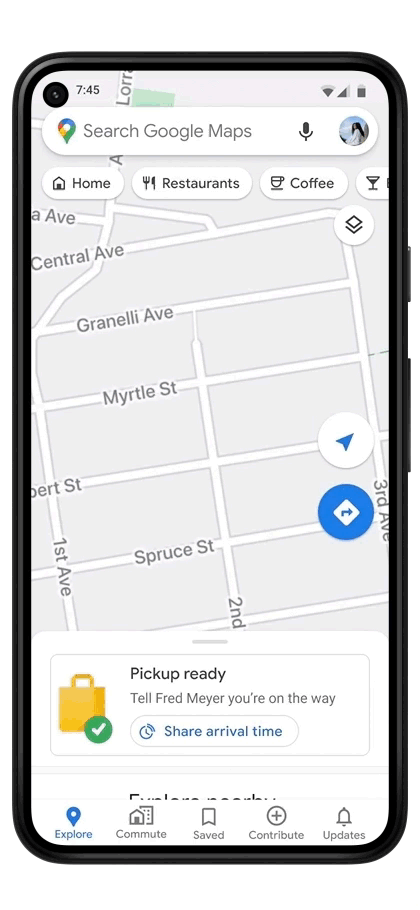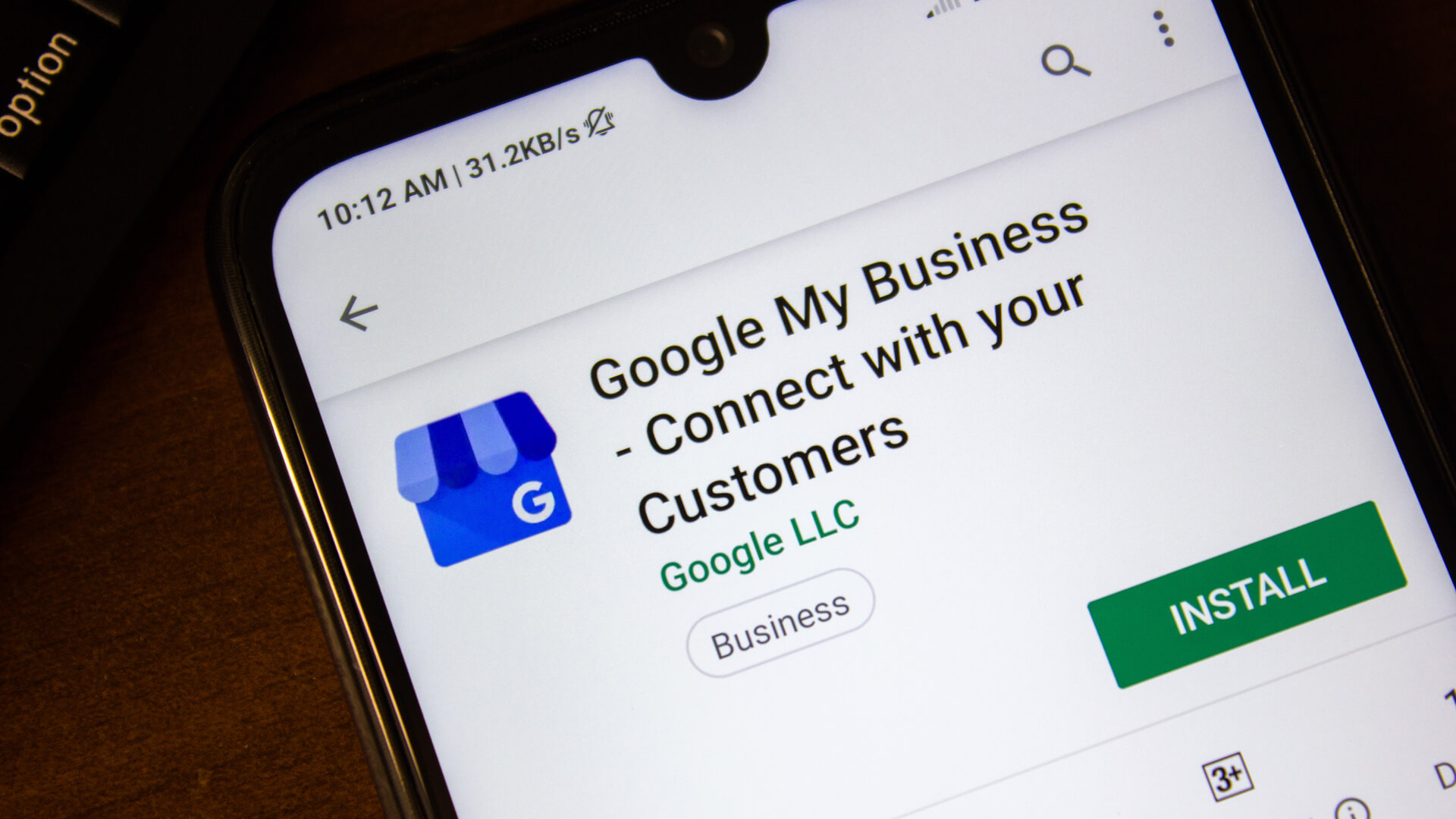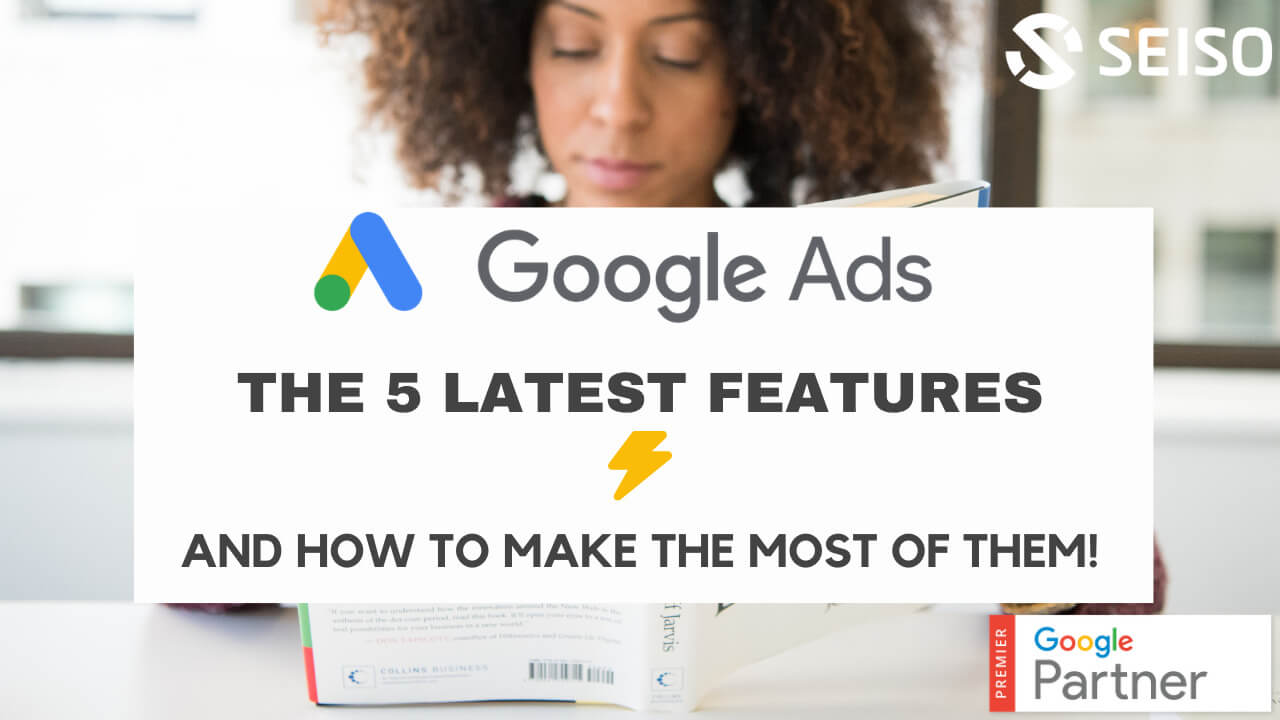Google is releasing a number of AI-powered updates to Maps and Google My Business (GMB), the company announced Tuesday. The new features include pickup and delivery attributes, a curbside pickup pilot program, indoor Live View, an updated directions interface and several eco-friendly tweaks to Maps.
Pickup and delivery attributes. The ability to display order and pickup options, such as delivery providers, fees, order minimums and pickup and delivery windows, is coming to GMB profiles, starting on mobile search with Instacart and Albertsons Co. stores in the U.S. The company also has plans to extend this feature to Google Maps later this year.

The information a business will be able to add to their GMB profile depends on whether they’re adding it themselves or if they’re working with a Google partner. Certain data, like product availability, will only be available through Google’s partners.
Pickup with Google Maps. The company also announced a pilot program in partnership with select Fred Meyer supermarkets in the Portland, Oregon area beginning this summer. The program will enable customers to input order details into Google Maps to facilitate the pickup process.


Google will then notify the customer when it’s time to leave to pick up their order and share the arrival time, which is automatically updated based on location and traffic information, with the store. Customers can also add their exact parking spot to complete pickup.
Although this pilot is limited to Fred Meyers stores in the Portland area, it will also only be available to businesses with an existing curbside pickup program, Google said.
Indoor Live View. Live View, Google’s augmented reality walking navigation feature, will be available within airports, transit stations and malls.


Live View is powered by global localization, a technology that uses AI to scan billions of Street View images to understand a user’s orientation, which has been a weak point for standard navigation apps. Google is also making use of new advancements that enable it to understand altitude and the location of objects within a building.
This feature is live on Android and iOS in select malls in Chicago, Long Island, Los Angeles, Newark, San Francisco, San Jose and Seattle. Next, it will roll out to more airports, malls and transit stations in Tokyo and Zurich over the coming months, with more cities to be added later.
Updated directions interface. Google has refreshed its Maps directions experience to show users a more comprehensive view of how long it’ll take to get to their destination via car, public transit, a rideshare app, and on bike or on foot, without the need to toggle between tabs.


Google’s machine learning models will prioritize the user’s preferred mode of travel as well as modes of travel that are popular in their city. “For example, if you bike a lot, we’ll automatically show you more biking routes,” the announcement reads, “And if you live in a city like New York, London, Tokyo, or Buenos Aires where taking the subway is popular, we’ll rank that mode higher so you get the information you need faster.” This feature will roll out globally on Android and iOS in the coming months.
An emphasis on eco-friendliness. The updated directions experience (mentioned above) is just one of several eco-friendly features the company announced:
- Eco-friendly driving routes – A new routing model will enable Google Maps to automatically select the route with the lowest carbon emissions footprint (if it takes approximately the same amount of travel time). Users will also be able to choose whether they want the most eco-friendly route or the fastest route presented by default within their settings.
- Low emission zone notifications – Launching in Germany, the Netherlands, France, Spain and the UK this June, this feature will tell drivers when they’re entering a low emission zone so they’ll know whether their vehicle is allowed in the area.
- Weather and air quality layers – Google has partnered with The Weather Company, AirNow.gov and the Central Pollution Board of India to enable Maps mobile users to check forecasted weather conditions and air quality. Both these features will be coming to Android and iOS over the next few months, with the weather layer available globally and the air quality layer launching first in the U.S., Australia and India.
Why we care. Pickup and delivery attributes within GMB profiles may help you improve your customer experience since users will be provided with the information they need to make a decision before they add everything to their carts. If the Pickup with Google Maps program rolls out more widely, it may streamline curbside pickup, which can help you sell to customers on their terms, as conveniently as possible.
The indoor Live View feature will be rolling out to malls and may help customers navigate to your store, enabling them to get in and out more quickly.
“Google is cramming a lot of capabilities and, increasingly, commerce, into Maps,” said Greg Sterling, VP of market insights at Uberall and former contributing editor at Search Engine Land. “By pushing innovative features, Google continues to expand the definition of digital mapping and ensure it remains dominant in this critical mobile segment.” Although many of these new features don’t directly compete with features offered by competitors like Yelp, they may make Google Maps more compelling as an all-in-one option, which, as Sterling points out, may help Google maintain its position as the intermediary between our activities on and offline.
Contributing authors are invited to create content for Search Engine Land and are chosen for their expertise and contribution to the search community. Our contributors work under the oversight of the editorial staff and contributions are checked for quality and relevance to our readers. The opinions they express are their own.



